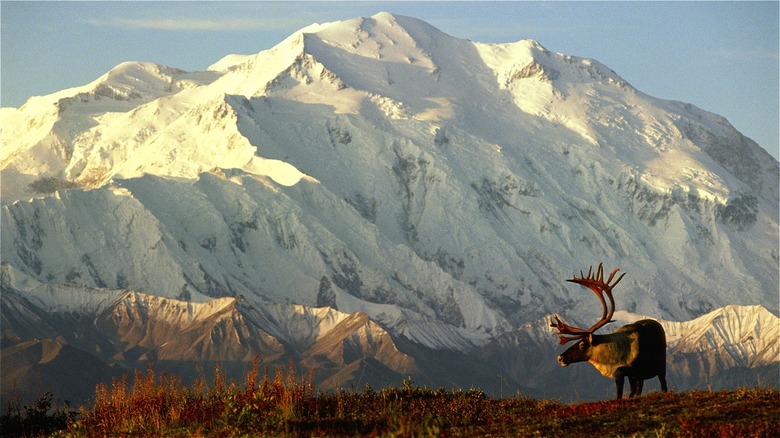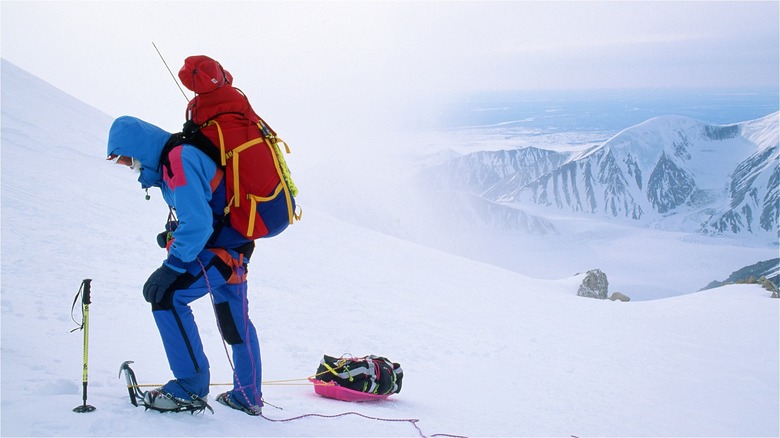Sneaky Dangers That Make Climbing The Iconic Mount Denali So Risky
The highest mountain in North America, Alaska's Mount Denali, formerly known as Mount McKinley, rises 20,310 feet and hosts permanent snowfields and numerous glaciers, some over 30 miles long. In terms of elevation, Denali doesn't crack the list of the 100 highest mountains. However, when judged by prominence — which refers to a summit's elevation relative to its surrounding terrain — Denali ranks third, behind Aconcagua in the Andes and Mount Everest in the Himalayas.
Ultimately, Denali is a formidable mountain no matter where it stands in the rankings of elevation and prominence. Climbers die here almost every year, typically from falls or the extreme weather. Since 1932, over 120 people have died on the peak, including experienced mountaineers like Terry "Mugs" Stump, who fell to his death while descending Denali's South Buttress on May 21, 1992.
Falls and unpredictable weather present serious dangers to any hiker, but the sneakiest and most insidious concern is acute mountain sickness (AMS), which can impede brain and body function at a time when you need them most. Worse still, AMS can lead to even more serious conditions, such as high-altitude cerebral edema (HACE) and high-altitude pulmonary edema (HAPE).
Elements, exhaustion, and altitude are all deadly dangers
Situated in one of the best parks to visit if you're looking to beat the summer heat, Denali may look like a tempting challenge from afar, away from the wind, the freezing cold, and the sickening altitude. If you're serious about climbing Denali, however, you should already enjoy robust cardiovascular health. In addition to that, hikers should undertake months of training for both strength and endurance to prove to themselves and others that they really are ready to challenge the mountain. Achieving this will help mitigate the ever-present peril of exhaustion during the climb.
One can't prepare for everything, though, especially acute mountain sickness (AMS). AMS typically strikes around 11,000 feet, where thin oxygen can cause dizziness, fatigue, headaches, loss of appetite, nausea, vomiting, increased heart rate, shortness of breath, and low quality sleep. Hikers can't really train for this condition; all they can do is manage their ascent. After around 9850 feet, hikers should climb no more than 1640 feet per day and allow themselves to acclimatize as best they can. Climbing faster than this risks acute mountain sickness — the mildest form of altitude sickness.
If an individual with AMS continues to ascend Denali, they risk developing high-altitude cerebral edema (HACE), a condition in which the brain swells due to lack of oxygen, and/or high-altitude pulmonary edema (HAPE), where fluid accumulates in the lungs, also caused by oxygen deprivation. Both of these conditions can lead to a coma and then death if not treated within a few hours.

